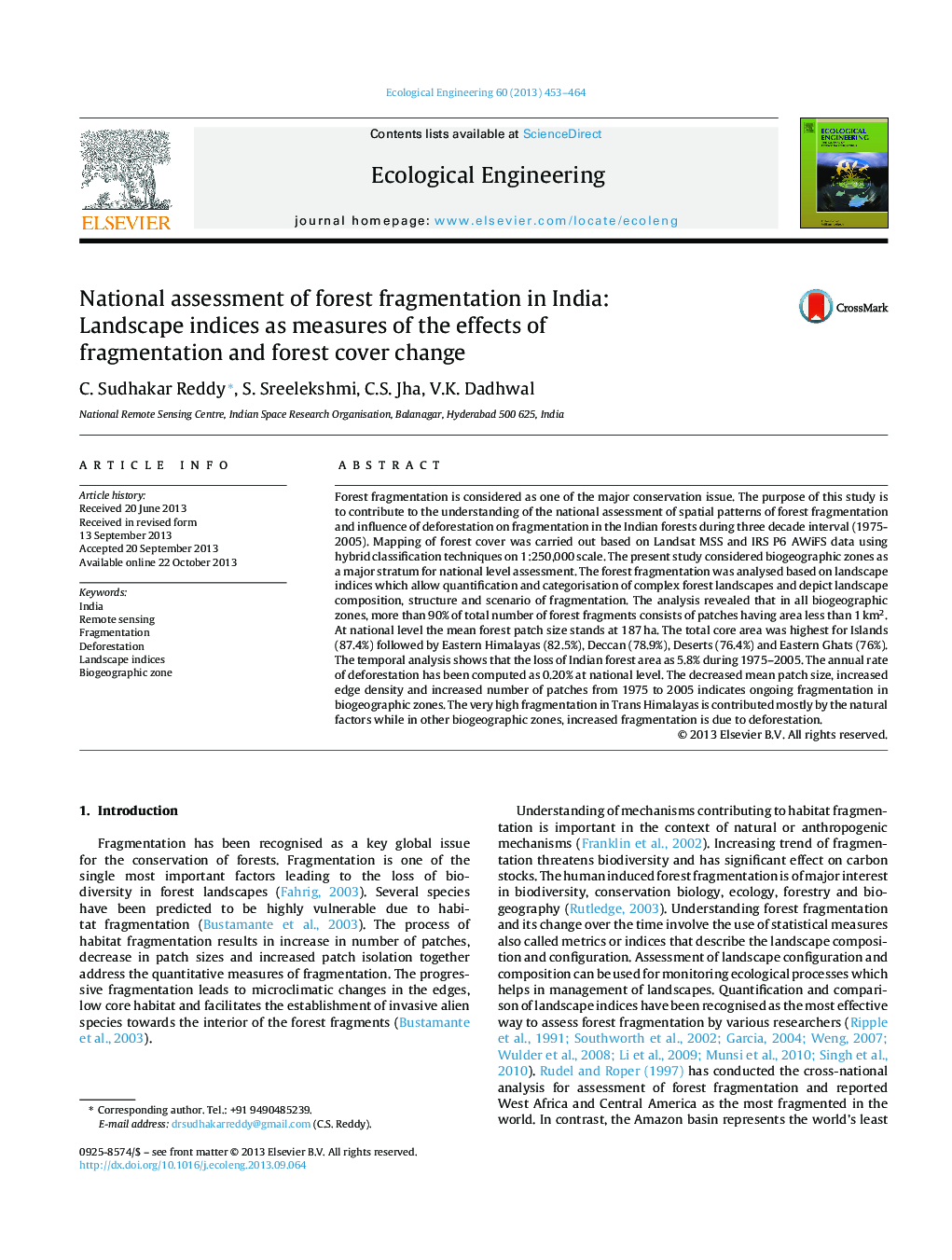| کد مقاله | کد نشریه | سال انتشار | مقاله انگلیسی | نسخه تمام متن |
|---|---|---|---|---|
| 6302462 | 1618038 | 2013 | 12 صفحه PDF | دانلود رایگان |
Forest fragmentation is considered as one of the major conservation issue. The purpose of this study is to contribute to the understanding of the national assessment of spatial patterns of forest fragmentation and influence of deforestation on fragmentation in the Indian forests during three decade interval (1975-2005). Mapping of forest cover was carried out based on Landsat MSS and IRS P6 AWiFS data using hybrid classification techniques on 1:250,000 scale. The present study considered biogeographic zones as a major stratum for national level assessment. The forest fragmentation was analysed based on landscape indices which allow quantification and categorisation of complex forest landscapes and depict landscape composition, structure and scenario of fragmentation. The analysis revealed that in all biogeographic zones, more than 90% of total number of forest fragments consists of patches having area less than 1Â km2. At national level the mean forest patch size stands at 187Â ha. The total core area was highest for Islands (87.4%) followed by Eastern Himalayas (82.5%), Deccan (78.9%), Deserts (76.4%) and Eastern Ghats (76%). The temporal analysis shows that the loss of Indian forest area as 5.8% during 1975-2005. The annual rate of deforestation has been computed as 0.20% at national level. The decreased mean patch size, increased edge density and increased number of patches from 1975 to 2005 indicates ongoing fragmentation in biogeographic zones. The very high fragmentation in Trans Himalayas is contributed mostly by the natural factors while in other biogeographic zones, increased fragmentation is due to deforestation.
Journal: Ecological Engineering - Volume 60, November 2013, Pages 453-464
